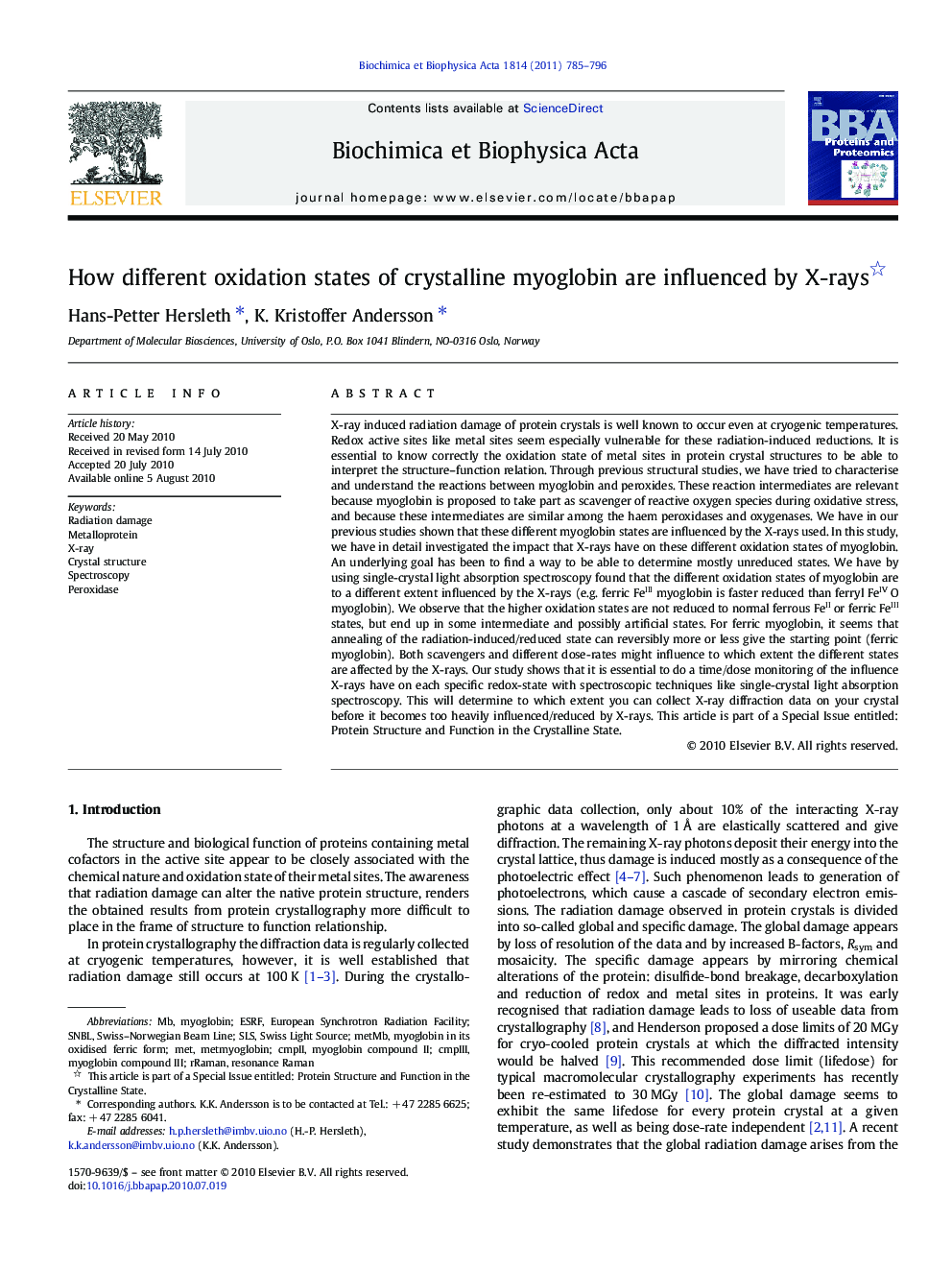| Article ID | Journal | Published Year | Pages | File Type |
|---|---|---|---|---|
| 1177888 | Biochimica et Biophysica Acta (BBA) - Proteins and Proteomics | 2011 | 12 Pages |
X-ray induced radiation damage of protein crystals is well known to occur even at cryogenic temperatures. Redox active sites like metal sites seem especially vulnerable for these radiation-induced reductions. It is essential to know correctly the oxidation state of metal sites in protein crystal structures to be able to interpret the structure–function relation. Through previous structural studies, we have tried to characterise and understand the reactions between myoglobin and peroxides. These reaction intermediates are relevant because myoglobin is proposed to take part as scavenger of reactive oxygen species during oxidative stress, and because these intermediates are similar among the haem peroxidases and oxygenases. We have in our previous studies shown that these different myoglobin states are influenced by the X-rays used. In this study, we have in detail investigated the impact that X-rays have on these different oxidation states of myoglobin. An underlying goal has been to find a way to be able to determine mostly unreduced states. We have by using single-crystal light absorption spectroscopy found that the different oxidation states of myoglobin are to a different extent influenced by the X-rays (e.g. ferric FeIII myoglobin is faster reduced than ferryl FeIV═O myoglobin). We observe that the higher oxidation states are not reduced to normal ferrous FeII or ferric FeIII states, but end up in some intermediate and possibly artificial states. For ferric myoglobin, it seems that annealing of the radiation-induced/reduced state can reversibly more or less give the starting point (ferric myoglobin). Both scavengers and different dose-rates might influence to which extent the different states are affected by the X-rays. Our study shows that it is essential to do a time/dose monitoring of the influence X-rays have on each specific redox-state with spectroscopic techniques like single-crystal light absorption spectroscopy. This will determine to which extent you can collect X-ray diffraction data on your crystal before it becomes too heavily influenced/reduced by X-rays. This article is part of a Special Issue entitled: Protein Structure and Function in the Crystalline State.
